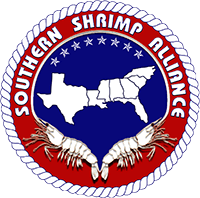State Governments Are Independently Testing Imported Seafood
In response to the FDA’s failure to adequately address import seafood safety, many states have begun their own testing programs for harmful contaminants in imported seafood:
- Since at least 2002, the state of Louisiana has had an Emergency Rule in place to test imported shrimp and crawfish for chloramphenicol so as to provide for the sale of shrimp and crawfish that are not contaminated with chloramphenicol. Further, in 2007, the state codified a provision which requires testing for fluoroquinolones in seafood from China and Vietnam.
- In addition to Louisiana, Georgia, Alabama, Mississippi, Arkansas, Tennessee, Oklahoma, and Florida also administer their own testing programs of imported seafood. Florida and Alabama have been testing imported seafood since 2002; Georgia since 2003; Mississippi since 2005, Tennessee since 2006; and Oklahoma and Arkansas since 2007.
The FDA Has Recently Been Unsupportive of these Efforts
Arkansas began its testing program in 2007, sending samples to FDA for analysis. However, despite the fact that one of the six shipments sampled by the state resulted in the identification of a harmful contaminant in the imported seafood, the FDA expressed an unwillingness to assist with future testing efforts. In response to the FDA, Arkansas’s Public Health Laboratory equipped itself so that it could independently test imported seafood for harmful contaminants.
State Testing Has Identified Imported Seafood With Harmful Contaminants
State testing has repeatedly resulted in the finding of banned, dangerous antibiotics and antifungals in imported seafood:
- Mississippi’s lab has repeatedly found Ciprofloxacin, Enrofloxacin, and chloramphenicol — all banned antibiotics — in imported seafood.
- Alabama’s lab tested 129 samples of imported seafood in 2007. Of these samples, 64 tested positive for fluoroquinolones, 19 tested positive for the banned antifungal malachite green, and 8 tested positive for the banned antifungal crystal violet. In 2005, the lab tested 21 samples of imported seafood found that 19 tested positive for fluoroquinolones and 3 tested positive for malachite green. No contaminants were detected in domestic seafood similarly tested.
- Florida tested 16 samples of imported seafood in 2007 for fluoroquinolones, of which 3 tested positive. In 2005, Florida tested 19 samples of imported seafood, of which 15 tested positive.
- In 7 samples taken of imported seafood by Oklahoma and tested in Mississippi, 3 were found to be contaminated by either Ciprofloxacin or Enrofloxacin.
- In 6 samples taken of Chinese catfish in May of 2007 by Arkansas, 1 was found to be contaminated by gentian violet. One sample was also found to contain Melamine.
- Georgia and Tennessee’s lab tests also reveal the presence of banned antibiotics in imported seafood.
|
